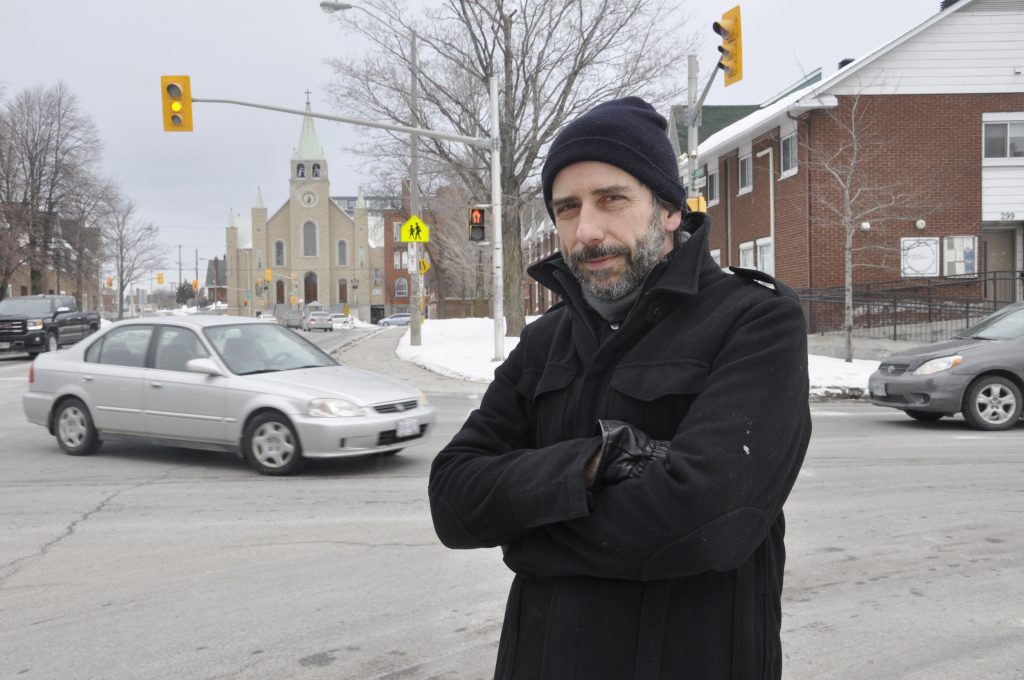City pushes for more road safety
By Clive Ngan
Located on the edge of Little Italy and Chinatown, the intersection of Gladstone and Rochester streets is located at a cross-section of life in Ottawa: diverse crowds, authentic cuisine and — according to Somerset Coun. Catherine McKenney — dangerous traffic flows.
“It was brought to my attention about a year ago that families in the Rochester area were concerned about road safety on Gladstone,” McKenney said. “People drive far too fast, they get off of the Queensway, they’re coming into a residential community and they continue to drive very fast.”
At a Jan. 10 public consultation —mere steps away from the intersection at the first-floor lounge of the Rochester Tower—McKenney spoke to residents about their concerns and recommendations.
Two main proposals emerged at the meeting, including limiting left turns onto Rochester Street and pushing the sidewalk out to create a narrower pedestrian crossing. The hope is the recommendations make the intersection safer after a 19-year-old male was seriously injured after being hit by a car last November.
Incidents like this one, as well as the two traffic-related deaths in McKenney’s ward last summer, have made the councillor a vocal supporter of Vision Zero. As a movement beginning in Sweden in 1994, Vision Zero would establish a target of zero traffic-related deaths each year.
“It’s really about, broadly speaking, safe systems,” said Graham Larkin, founder and executive director of Vision Zero Canada. “When a person makes a mistake, the system won’t fail them so that you don’t have trees where you can crash into them or you don’t have inflexible barriers.”
Creating systems that can anticipate human error is a progressive way of tackling traffic safety, Larkin said, making education-focused programs “a waste of money almost always.”
For Larkin, lower speed limits are the first step.
“The risk of death of a person getting hit by a car climbs enormously after 30 (km/h),” Larkin said.
In Larkin’s view, some policymakers treat the speed limits and design of some streets as if “handed down by Moses,” making it difficult to convince them of other options.
Improving the Gladstone and Rochester intersection is just one step in adopting the Vision Zero policy in Ottawa, McKenney said, as it has been selected for a “pedestrian enhancement.”
The pedestrian enhancement designation mandates city staff to investigate “things like reducing the space where pedestrians have to cross, so making ‘bulb outs,’ sidewalks (and) making the intersection stand out more where pedestrians cross with zebra markings,” she added.
McKenney added that she’s been very clear with city staff about her ward’s views and is anticipating the staff’s final recommendation to the city’s transportation committee next month.
The recommendation will then be studied by the committee with an aim to begin construction this summer.
While some locals of the Gladstone and Rochester area are supportive of McKenney’s work, others say they haven’t witnessed much danger in the area.
“There was a couple accidents that happened in the past that were made publicized and were pretty scary, but you rarely see accidents happening around those intersections,” said Stefano Nasrallah, 28, who has lived at nearby 256 Rochester St. his whole life.
“Honestly, I don’t notice anything too unusual,” Curtis Perry, a teacher at the adjacent Adult High School, added. “If there is concern, I have no reason to disbelieve Coun. McKenney.”
“Anything we can do to make this intersection a little bit safer,” he added, “would obviously help the student population here as well as anybody who’s traversing across a pretty major intersection.”

